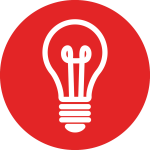Accessibility
As an open textbook author it is important to consider how all students will engage with the content. Listed below are some of the barriers students face during their education, as well as some solutions and examples.
| Barrier Type | Challenge | Solution | Example |
|---|---|---|---|
| Physical Impairments | Low vision or blindness | Use alternative text (alt-text) to describe an image’s content or function that can be read by a screen reader. | All images in Introduction to Psychology – 1st Canadian Edition have alt-text. |
| Hearing impairment or deafness | Add transcripts and captions to all audio content. | The instructional videos created for Concepts of Biology-1st Canadian Edition are all captioned. | |
| Motor-skill impairment, immobility | Provide file formats that can be uploaded into a variety of mobile devices. | Introduction to Tourism and Hospitality in BC has a number of file types available. | |
| Learning Disabilities | Difficulty absorbing information via reading or difficulty concentrating (ADHD) | Add audio clips to printed text that student can listen to while reading along. | Common Core Trade series (23 books) has audio files that accompany the text content. |
| Language Comprehension | Low literacy: adult basic education (ABE) student or English language learners (ELL) | Provide a print copy with increased font size or provide formats that allow the font size to be adjusted. | The PDF of BC Reads: Adult Literacy Fundamental English – Reader 1 uses large text. |
| Limitations of Time and Place | Working, parenting, or live far from a college or university | Provide a version of the textbook that can be accessed from anywhere online. | All books in the B.C. Open Textbook Collection can be accessed online. |
| Unreliable or no access to the Internet | Set up a service that can supply a print-on-demand copy. | See the print-on-demand option for Principles of Social Psychology – 1st International Edition. |
Tips for Accessibility
Here are some accessibility tips:
- Use clear, straightforward language. Make the content understandable.
- Provide multiple formats whenever possible. This will allow different users to access the resource in different ways.
- Use a clear organizational structure to guide readers through the resource.
- Provide proper information and resources to make the content readable and understandable for users (ie. Glossary, Abbreviation list).
- Develop an accessibility statement to show ways that the resource has been made more accessible and a way for users to contact you with suggestions to improve accessibility.
- When requesting peer reviewers, make sure to highlight the importance of accessibility, diversity, and inclusion.
Universal Design
Universal Design is the process of creating products (devices, environments, systems, and processes) that are usable by people with the widest possible range of abilities, operating within the widest possible range of situations (environments, conditions, and circumstances). Universal Design emerged from the slightly earlier concept of being barrier-free, the broader accessibility movement, and adaptive technology and assistive technology. It also seeks to blend aesthetics into these core considerations.
Resources
 Refer to the BCcampus Open Education Accessibility Toolkit for information on how to make sure you create an accessible textbook.
Refer to the BCcampus Open Education Accessibility Toolkit for information on how to make sure you create an accessible textbook.- The National Center on Universal Design for Learning also offers guidelines on how best to design educational resources so that students with a variety of learner styles benefit.
- Survey your syllabus and course design with the Inclusive by Design survey
“Accessibility, Diversity, and Inclusion” from Self-Publishing Guide by Lauri M. Aesoph is licensed under a Creative Commons Attribution 4.0 International License, except where otherwise noted.
“Accessibility, Diversity, and Inclusion” from UBC Open Text Publishing Guide by Erin Fields; Amanda Grey; Donna Langille; and Clair Swanson is licensed under a Creative Commons Attribution-NonCommercial 4.0 International License, except where otherwise noted.

